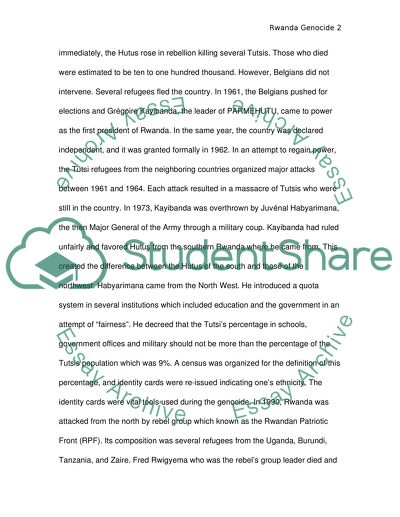Cite this document
(“Rwandan genocide Essay Example | Topics and Well Written Essays - 3750 words”, n.d.)
Retrieved from https://studentshare.org/environmental-studies/1418468-rwandan-genocide
Retrieved from https://studentshare.org/environmental-studies/1418468-rwandan-genocide
(Rwandan Genocide Essay Example | Topics and Well Written Essays - 3750 Words)
https://studentshare.org/environmental-studies/1418468-rwandan-genocide.
https://studentshare.org/environmental-studies/1418468-rwandan-genocide.
“Rwandan Genocide Essay Example | Topics and Well Written Essays - 3750 Words”, n.d. https://studentshare.org/environmental-studies/1418468-rwandan-genocide.


